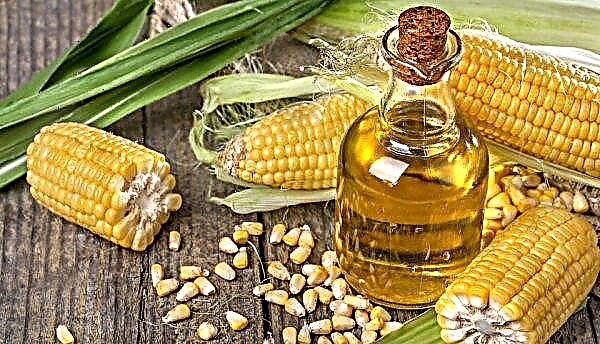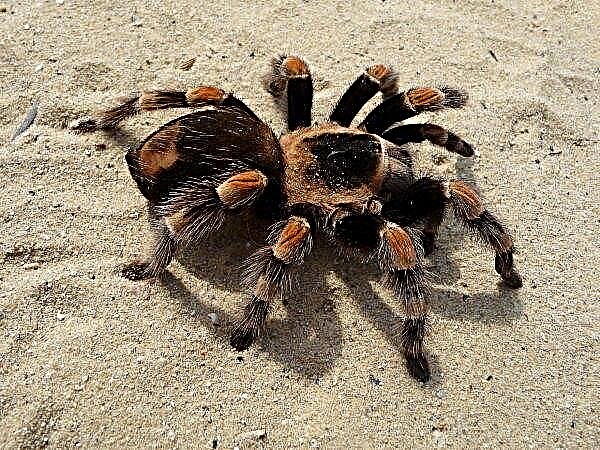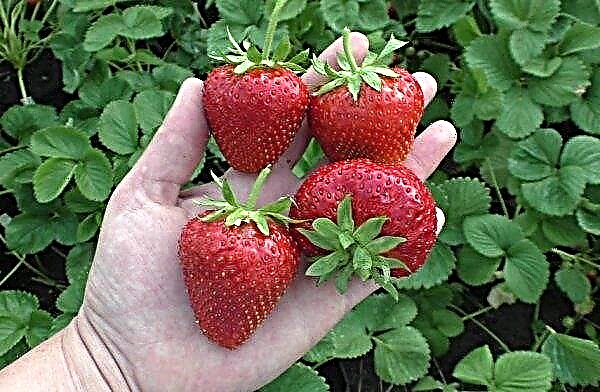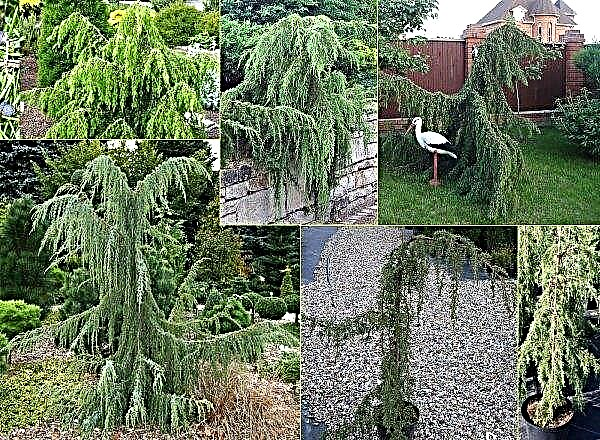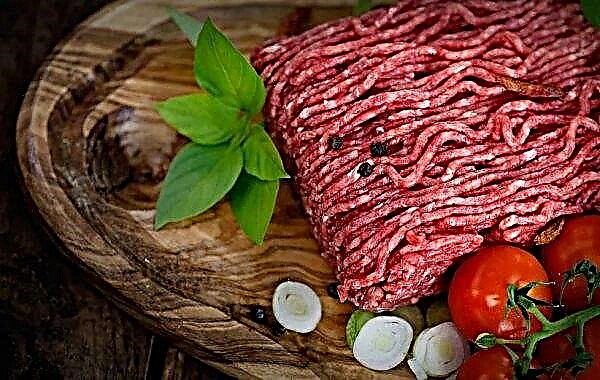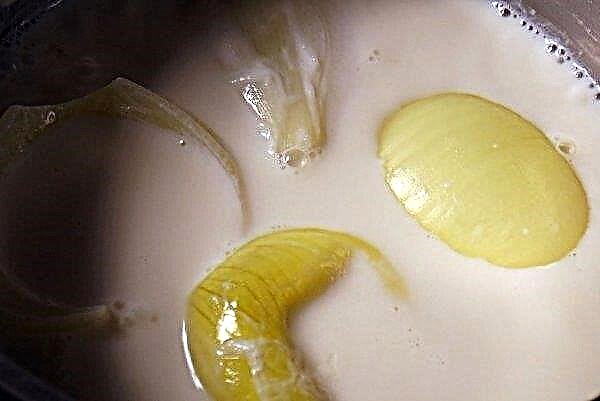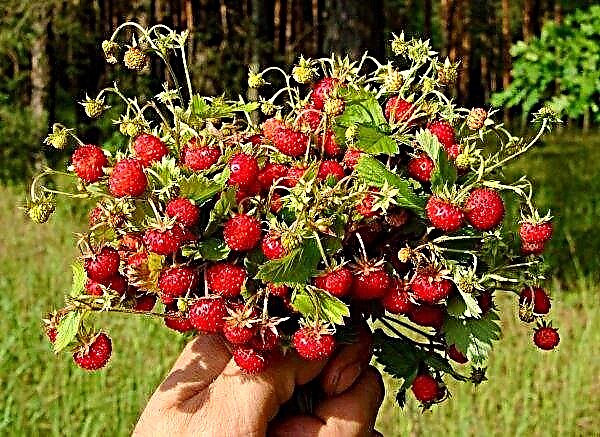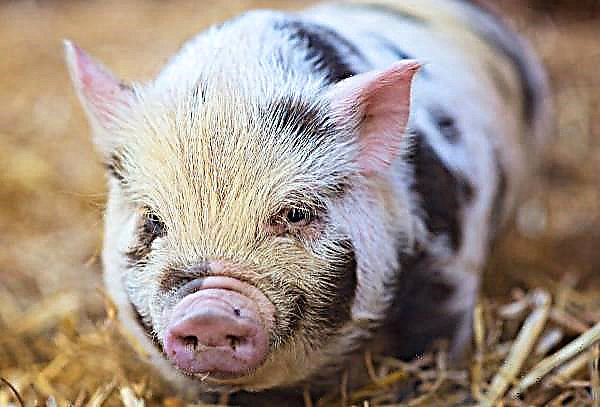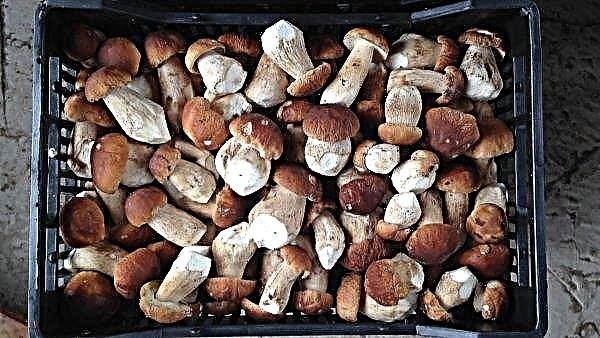Pumpkin is a real treasury of organic substances and minerals, so its health benefits are not in doubt. In the article, we consider the effect of pumpkin on the human body, as well as its use in cooking, folk medicine and home cosmetology.
Pumpkin Botanical Description
Pumpkin is a genus of herbaceous annual plants of the Pumpkin family. Various varieties of this culture are cultivated in gardens and melons. Pumpkin grows in a twisting creeping shoot. The stem covered with spiky processes can grow up to 10 meters in length.
Leaves are alternate, planted on long petioles. The leaf plate is large (up to 30 cm in diameter), ribbed, finely toothed, dotted with hard villi. The flower is quite large, unisexual, mainly carrot color. The peduncle is ribbed.
The fruit is spherical, oval or pear-shaped, with a smooth surface. The pumpkin peel is dense. The inside is fleshy, in the section you can observe many seeds. The average weight of the fetus is 8-10 kg, sometimes this figure reaches 50 kg and above.
The length of the pumpkin varies from 20 to 70 cm. The color can vary depending on the variety - the fruit can be orange, green, white, gray and even pink; plain or spotted.
Seeds are large, flat, about 1–2 cm in size, with a distinctive lateral rim and two shells. The color of the seeds may be pale yellow, white or brown. The nucleus consists of two yellow cotyledons and one germ.Did you know? The Indians grew pumpkin 5 thousand years ago. Pulp used them in cooking, they squeezed oil out of the seeds, and made dishes from the peel. This plant culture came to the European continent around the 16th century thanks to the Spanish conquistadors.
Culture is divided into four types:
- Nutmeg pumpkin - a leader in taste and nutritional characteristics. However, this is the most moody variety. This group includes such varieties as Arabatskaya, Vitaminnaya, Marina di Chioggia, Golden Pear, pear-shaped Pearl, Gilea, Novelty, Palav Cadu, Butternat.
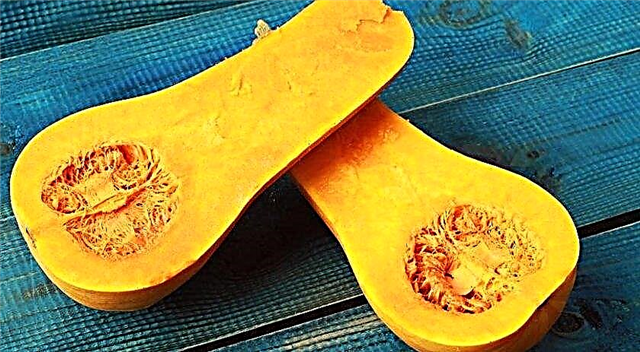
- Large-fruited - a group of varieties with very large and sweet fruits with a long shelf life and tasty seeds. These include: Titanium, Hundred pound, self-pollinated variety Smile, Mushroom winter, Marble, Atlas, Hokkaido pumpkin, Baby, Sweetie.

- Hard bark pumpkin known for early ripening. The group is represented by the following varieties: Bulgarian (or Ladies' Nail), gymnospermous pumpkin, Freckle, Gribovskaya bush, Delicata, Danka Polka, Almond, Country.
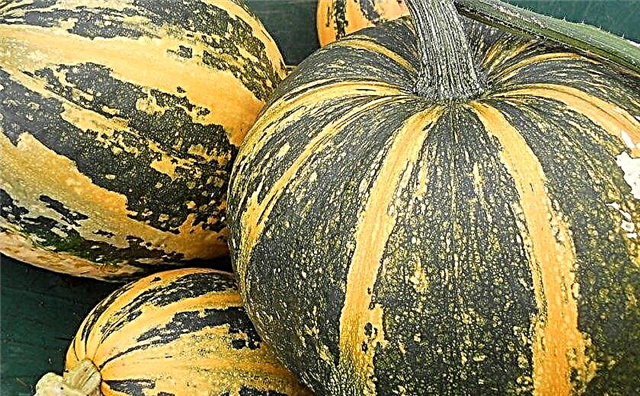
- Decorative pumpkin - unsuitable for use in cooking variety. The most attractive representatives of the group are: Crown, Warty pumpkin, Fungus (or Churban), Orange, Sweet Dumplinq, very similar in appearance Jack-be-little and Baby Boo, pear-shaped varieties Kleine Birne Bicolor and Kleine Bicolor.
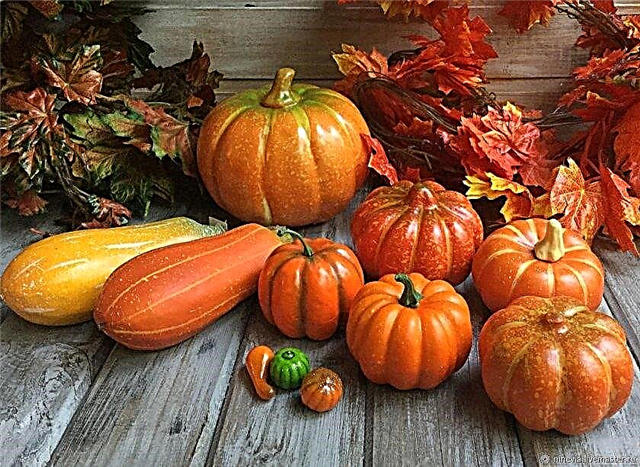
Beneficial features
Edible varieties can be consumed in any form - raw, boiled, baked, dried. We will figure out what is the usefulness of the described vegetable and find out if it retains its nutritional characteristics after processing.
Boiled pumpkin
After heat treatment, some of the organic substances and trace elements disappear. Despite this, the product in question has a generally positive effect on internal organs.
Boiled pulp helps to remove toxins and sodium salts, has a direct choleretic, diuretic and laxative effect. This dietary product alleviates the condition of those suffering from cardiovascular pathologies and being overweight - it reduces the load on the heart muscle to some extent.
Boiled vegetable is indispensable for people of age, because after heat treatment it becomes very soft. In this form, the pulp is better perceived by the teeth and stomach. For the same reason, the product is great for baby food.
Dried pumpkin
Another opportunity to preserve most of the beneficial qualities of an orange vegetable is to dry it.
Dried pumpkin is valued no less fresh: the main advantage is that it practically does not require additional processing.
After drying, almost all the vitamins contained in the fresh product are preserved. Dried pumpkin can give strength to athletes. In addition, such a product improves memory, heals digestion, and removes bile and mucus.
Pumpkin Oils
Pumpkin oil is noted for its high nutritional value; it is 40% produced from the pulp and seeds of a vegetable. Oil can be purchased at a pharmacy for little money. A natural remedy is indispensable in the treatment and prevention of a number of ailments. It is used in the pathology of the gastrointestinal tract, cardiovascular and endocrine systems.
The product is able to cleanse the body of toxins. Oil helps strengthen the body's defenses, maintains hormonal balance. The product is used and for vision problems, impaired reproductive system functions, it treats mucosal damage.
In addition, this oil has a beneficial effect on the epidermis, hair, nails, on the condition of bones and cartilage. Wound healing and antibacterial properties of the product are also known.
Important! Pumpkin oil is not suitable for frying, because after heat treatment it loses most of its nutritional qualities.
Sunflower seed
The value of the seeds is explained by the increased concentration of protein, magnesium, zinc, tocopherol, useful acids and vegetable oils in them (more than 50%). They stimulate the work of the heart muscle, relieve pain in angina pectoris and other pathologies of the heart and blood vessels. Seeds are useful in the prevention and treatment of liver and kidney ailments.
After drying, the product can be stored up to 2 years without losing its properties. Dried seeds are useful for the male and female reproductive systems - they activate sex hormones and prevent prostatitis in men.
Seeds are very effective in the fight against helminths, help with dandruff, oily hair, as well as with acne on the skin of the face and body. This is an excellent tool to slow down skin aging.
Tops
When preparing recipes for alternative medicine, even pumpkin leaves are used. The usefulness of the tops of vegetables can be verified by studying its composition. It contains several proteins called PR-1, PR-2, PR-5, which exhibit pronounced antibiotic and antifungal properties.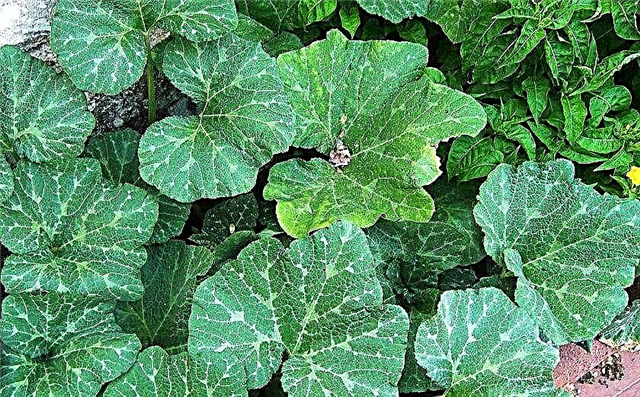
When using pumpkin leaves, the healing process is accelerated. In addition, in the tops there is a lot of vitamin C (more than in the pulp). Due to ascorbic acid, the immune system is strengthened, blood formation processes are regulated. The benefits are in regulating the metabolism, removing toxins and slowing down the aging process.
Contraindications and side effects
Unfortunately, the presented vegetable has not only useful properties.
- You should not include it in the menu if you suffer from the following ailments:
- chronic diseases of the gastrointestinal tract (especially at the stages of exacerbation);
- failure of acid-base balance in the body;
- diabetes.
The reason for refusing pumpkin may be an individual allergic reaction. Some people experience flatulence when using this vegetable. Children may have colic. If you also noticed a negative reaction of your body, in this case it is better to refrain from consuming pumpkin.
Frequent use of seeds can cause nausea and vomiting. And pumpkin juice can cause side effects - bloating, diarrhea and nausea.Important! Pumpkin seeds are especially harmful for expectant mothers. — they can cause premature birth. If you want to include a pumpkin in your menu during the period of bearing a child, you should first consult a doctor.
Chemical composition and calorie content
Next, we analyze the chemical composition of the product.
100 g of pumpkin contains:
- proteins - 0.9 g;
- carbohydrates - 5.9 g (including mono- and disaccharides - 4.1 g);
- pectins - 0.3 g;
- organic acids - 0.1 g.
The amount of water in the vegetable is 90.2 g, and the ash is 0.5 g. The saturation of the fetus with fiber is 1.2 g. Pumpkin is famous for its considerable concentration of vitamins.
Take a closer look

Organic substances in the product are presented as follows:
- retinol - 1.4 mg;
- thiamine - 0.05 mg;
- riboflavin - 0.06 mg;
- niacin - 0.5 mg;
- folic acid - 6 mcg;
- ascorbic acid - 14 mg.
Essential macronutrients for the body are in orange fruits in such quantities:
- potassium - 200 mg;
- calcium - 26 mg;
- magnesium - 14 mg;
- sodium - 4 mg;
- phosphorus - 24 mg.
Micronutrient saturation:
- iron - 0.4 mg;
- iodine - 1 mcg;
- cobalt - 1 mcg;
- Manganese - 38 mcg;
- copper - 180 mcg;
- fluorine - 84 mcg;
- zinc - 240 mcg.
Pumpkin is characterized by a fairly high energy value: 100 g of raw product contains an average of about 25 kcal.
Important! The calorie content of pumpkin seeds is 25 times higher than the calorie content of the pulp: 100 g of seeds contain 556 kcal.
Application features
Next, we consider how today, cooks, folk doctors and cosmetologists use this affordable vegetable in their practice.
In cooking
Pumpkin has found application in recipes for a variety of cuisines in most countries. It is most popular in Europe, as well as in North and South America.
Pumpkin can be subjected to various types of heat treatment: bake, cook, steam. The vegetable is suitable for making soups, as a filling for pies, can serve as a side dish for meat dishes, the basis for the production of puddings, desserts.
Delicious juice is obtained from pumpkins. Finely chopped fruit is added to various cereals, which will make them even more nutritious. They use it even without processing - in a chopped, grated form, squeezing juice out of it. Pumpkins can be preserved for the winter. For preservation, the fruits of nutmeg varieties are ideal.
On the basis of fruits, plants even produce baby food, for example, Gerber puree. After processing the vegetable in mashed potatoes, it is easily absorbed by the child's body.Sunflower seeds are eaten both raw and dried. They can complement salads, vegetable stews, as well as become ingredients for a breakfast cereal. In addition, the seeds can be ground with honey. Useful oil is made from them. Such products have a specific nutty aroma and a light bitterness on the palate.
Also from the seeds you can get a drink similar to almond milk. To do this, pre-soaked raw materials are crushed in a blender, then the resulting mass is mixed with water.
Pumpkin seeds are popular in Mexican cuisine. They are used to produce sauces traditional for this country.
Pumpkin leaves have a refined taste. They can be eaten raw by adding to salads. The smell of boiled tops is similar to the aroma of spinach. Pumpkin greens can be an excellent ingredient for soups.
For treatment
In pharmacology and the production of dietary supplements, pumpkin seeds are widely used (for example, to obtain the Pumpkin Seed preparation). The main component that allows such medicines to fight parasites in the body is part of the thin shell of seeds.
For deworming, a decoction of 400-500 g of raw seeds that are drunk on an empty stomach is used, and 2 hours after ingestion, the esophagus must be emptied with a saline laxative. Seeds are also used for violation of the functions of the bladder.Did you know? In the United States, the largest pumpkin pie was baked - 152 cm in diameter. For its preparation, bakers used 3 kg of vegetable, 1.5 kg of granulated sugar and 144 eggs. A giant treat was baked for about 6 hours.
In pharmacology, pumpkin pulp is especially valued, as it is an excellent source of carotene. Pulp boiled with honey is useful for heart problems, as well as liver and kidney ailments, and suppresses the feeling of nausea in expectant mothers.
In addition, she is good in the role of an accelerator of metabolism, as well as a mild laxative and diuretic. For these purposes, raw pumpkin or grated product is used. A decoction of cuttings also has a good diuretic effect.
For the intestines, porridge cooked from pulp, honey and wheat groats is useful. It is used for colitis, if there are difficulties with cleansing the intestines. A good choleretic effect can be achieved if for about three months there is 0.5 kg of crude product daily.
You can also take a baked or boiled analogue - 1.5-3 kg. A decoction prepared from 15–20 g of plant tail and 2 glasses of water has the same effect. The composition must be boiled for a quarter of an hour.
In chronic cystitis, pumpkin porridge is indicated: twice a day, 50 g each. Fresh nectar is also good in this case - 2-3 doses are needed daily. Thanks to the juice (0.5 cups per day), you can relieve swelling, improve bowel function, and accelerate the elimination of salts from the body.
Regular intake of fresh pumpkin nectar or a decoction with honey helps against insomnia. The people also practice the external use of the vegetable. Compresses from pumpkin juice are prescribed for burns, psoriasis, dermatitis. When periodontal disease with fresh juice of an orange fetus, it is recommended to rinse the oral cavity. You can also apply a decoction of flowers to the wounds.
In cosmetology
Due to the high concentration in the pulp of valuable trace elements and organic substances, it is often used in the production of a variety of natural masks for hair and skin. Masks are prepared from crushed raw or boiled pulp: products moisturize and nourish the epidermis.
To prepare a mask for dry skin type, egg yolk, honey, milk and raw pulp are mixed in equal amounts. And mixed with protein from the egg get masks for oily skin. Thanks to the anti-inflammatory properties of pumpkins, cosmetics containing this vegetable help rid the skin of acne.
There are also recipes for lightening pigment spots using gruel based on crushed pumpkin seeds. For this, 1 tbsp. l sunflower seeds are mixed with a similar amount of sour milk, add 1 teaspoon of lemon juice and honey. The composition is applied to the skin for 15 minutes, after which it is washed off with cold water.
Beauticians from Japan and Korea are creating cosmetics based on pumpkin extracts, positioning them as moisturizers.
To solve the problem of split ends of the hair, peeled and chopped seeds are diluted with water in a ratio of 1:10. The composition is applied to the hair, then the head is covered with a towel for 30 minutes. After the specified time, the mask is washed off with soapy water.
Did you know? In ancient times, in Ukraine, pumpkin served as part of the matchmaking. Autumn vegetable was presented to unenviable grooms.
The basic principles of growing pumpkin
Pumpkin is a gourd. This is a heat-loving, heat-resistant, photophilous, drought-tolerant plant. Sowing of seeds should be carried out at an air temperature of at least + 14 ° C and soil about 10 ° C. The site itself should be located in a sunny place.
In the case of a lower temperature, there is a good chance that the planted seeds will not sprout. It is advisable to plant a pumpkin on an impromptu heap of compost: on the site, form a depression, pour two buckets of fertile soil (with humus and manure) there and plant the seeds. In order to maintain soil moisture, cover part of the garden free from planting with earth or polyethylene. If there is a lack of moisture before sowing, pour warm water on the ground: this will increase the chances of a successful pumpkin cultivation.
In order to maintain soil moisture, cover part of the garden free from planting with earth or polyethylene. If there is a lack of moisture before sowing, pour warm water on the ground: this will increase the chances of a successful pumpkin cultivation.
When propagating the culture presented by seedlings, transplanted grown seedlings into open ground is necessary in mid-May or early summer. Keep a distance of at least 1 meter between plants, as the bush grows very much.
Recommended Reading

Pumpkin can also be propagated by transfer of pollen. For the purpose of artificial pollination, only the first female flowers of strong and healthy plants are selected. You need to pollinate the flowers by hand daily.
So that vegetables do not touch the ground, under each grown pumpkin on the site you need to put a small board. Otherwise, fruit rot will begin.
It’s easy to take care of the crop: you need to weed the beds as necessary, loosen, water.
Use sufficient water for irrigation, preventing the soil from drying out. In addition, the plant needs to be well fed with nitrogen and potash fertilizers.
In order for the plant to please the size and quality of its fruits, it should be cut. In late ripe pumpkin, it is necessary to pinch the stem. If you neglect this procedure and do not remove the top, the pumpkin will cease to grow in length, and the remaining leaves will switch to the nutrition of already formed fruits. Also, do not forget to pick flowers during July and August. Regarding the question of whether the plant is tied during cultivation, everything is clear here - the installation of the support is a mandatory procedure. It is necessary to collect fruits from the garden in early autumn, in dry weather. A sign of when to cut the fruit is the color of the leaves - they lose their green color and begin to turn yellow.
Also, do not forget to pick flowers during July and August. Regarding the question of whether the plant is tied during cultivation, everything is clear here - the installation of the support is a mandatory procedure. It is necessary to collect fruits from the garden in early autumn, in dry weather. A sign of when to cut the fruit is the color of the leaves - they lose their green color and begin to turn yellow.
Collection and storage
Remove the fruits carefully, cutting them without fail along with the tails. As for why the stalks should not be cut off - in ripe fruits, they easily fall off themselves.
For further storage, choose unharmed samples without abrasions and cuts on the skin. For some time, keep the harvest in the sun until the peel dries and gets stronger.
Important! When picking a pumpkin, in no case should you allow peel damage: try to take the fruits very carefully.
After harvesting, sort the crop by size, quality and maturity. In a dark place, whole fruits can be stored for several weeks. The storage room can be a room with a temperature of + 10 ... + 20 ° C or a ventilated basement with dry air and a temperature of at least + 4 ° C.
Large-fruited varieties with proper storage can lie until May, while their taste and nutritional characteristics only increase. The cut pumpkin should be kept only in the refrigerator (no longer than 30 days).
As you can see, in its beneficial effect on the human body, pumpkin can be compared and even left behind many plant crops used in cooking, folk medicine, and cosmetology.






